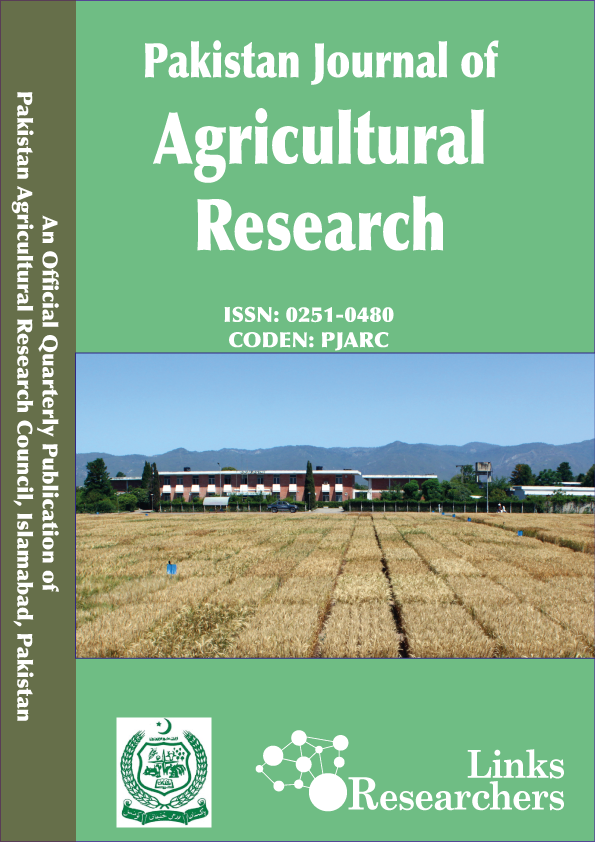Co-Occurrence of Chlamydia psittaci and Avian influenza H9N2 in Poultry of Pakistan
Co-Occurrence of Chlamydia psittaci and Avian influenza H9N2 in Poultry of Pakistan
Noor Ul Ain1, Naila Siddique1*, Akbar Ali Malik2, Muhammad Athar Abbas1, Saba Rafique1, Sidra Zamir1, Hu Huilong3, Wang Yihui3, Quan Hongkun3 and He Cheng3
ABSTRACT
Avian influenza virus H9N2 and Chlamydia psittaci (C. psittaci) pose a threat to avian health by inducing respiratory distress and secondary infections, however, their co-infection remains elusive. An epidemiological study employing referral samples (n=738: 491 tissue/swab and 247 sera) was conducted to determine their co-occurrence in Pakistan. The RT-PCR results revealed average 12.21% (60/491) positive C. psittaci, including 47%, 33%, 20%, and 0% positivity in wild domesticated birds (WD), commercial poultry (CP), and backyard poultry (BP) and wild birds (WB), respectively. Overall sero-prevalence of C. psittaci was 21.05%, including 46%, 30.7%, 23% and 0% positive samples in WD, CP, BP and WB, respectively. Moreover, highest positive RT-PCR and seropositivity were found in WD of Punjab in summer. Regarding H9N2 prevalence, RT-PCR results revealed average 30.14% positivity, including 73%, 16%, 3% and 8% in CP, BP, WD and WB, respectively. The overall sero-positivity of H9N2 was 70.85%, including 36%, 32%, 20% and 12% positive detection in CP, BP, WD and WB, respectively, and with the highest sero-positivity in Sindh during winter and in KP during spring time. As for coinfection of C. psittaci and H9N2, average 6.51% (32/491) positivity was detected in tissues/swab and 10.53% (26/247) sero-positivity was found in serum samples. Compared to C. psittaci infection, higher H9N2 circulation was dominant in poultry and our study revealed that co-occurrence of H9N2 and C. psittaci was under estimated and demands further investigation.
To share on other social networks, click on any share button. What are these?







